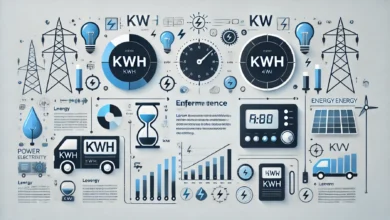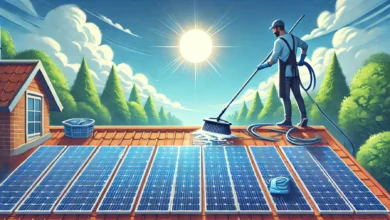Solar Energy Worldwide: Statistics, Facts and Trends of 2025

Solar energy has officially transitioned from being an alternative energy source to an incumbent energy source all across the globe. In 2025, solar energy is not just an alternative energy source, it is a vital tool for both economic growth, energy independence, and climate action. Countries from every corner of the globe are scrambling to increase their solar capacity largely driven by technological improvements, government influence, and the demand for decreased carbon emissions.
The current understanding of some of the recent statistics, numbers and evolving trends allows us to realize why investing in clean energy has shifted from being a meaningful but smart decision, to absolutely vital while creating a sustainable future.
Contents
- 1 Solar Energy in the World: 2025 Global Statistics
- 2 In 2025, Solar Energy Top Five Producing Countries
- 3 2025 Solar Energy Growth Trends
- 4 Solar Energy Investment and Financing Trends
- 5 Struggles and Possibilities in the Growth of Solar
- 6 The Future: looking at solar energy (going) to 2030 and beyond
- 7 Frequently Asked Questions (FAQ)
Solar Energy in the World: 2025 Global Statistics
In 2025 solar energy continues its remarkable growth. Based on compiled estimates from all global energy organizations, here is the current status of the world:
| Metric | 2025 Estimate |
|---|---|
| Total Installed Solar Capacity | +1,600 GW |
| New Annual Installations | ~300 GW |
| Global Electricity from Solar | >7% |
| Top Solar Producing Countries | China, United States, India, Japan, Germany |
| Average Utility Scale Solar Cost (USD/kWh) | $0.025 – $0.04 |
As solar panels have advanced over the past few years, they are growing in affordability and efficiency making installing solar more attainable for households, businesses and governments across the planet. Solar power has evolved into one of the least expensive sources of electricity on Earth.
In 2025, Solar Energy Top Five Producing Countries
To illustrate, below is an overview of the top solar-producing countries in 2025:
- China: Over 500 GW installed and still the leader of the global solar energy market.
- United States: Aggressive growth in Texas, California and Florida — over 170 GW installed.
- India: Huge government directed programs will allow total capacity to exceed 100 GW.
- Japan: Strong growth of residential solar adoption and commercial rooftop projects.
- Germany: Leading Europe’s move to solar with bold community solar programs.
Not only do these countries share a commitment to utility-scale projects, they also show support for the development of residential and commercial rooftop distributed solar renewables.
2025 Solar Energy Growth Trends
Solar energy growth is set to continue this year along a number of key trends:
- Technological Innovation: New technologies in perovskite solar cells and bifacial panels are pushing efficiency beyond 25%.
- Energy Storage Integration: Solar + battery systems are becoming standard offerings for residential and commercial clients.
- Policy Support: Governments can still promote solar projects with tax credits, feed-in tariffs or grants.
- Corporate Solar Commitment: Corporates such as Amazon, Google and Apple are leading the way in committing to massive solar procurement projects.
As various types of solar panels come available, consumers can now select solutions based on their climate and energy usage.
Solar Energy Investment and Financing Trends
Investment in solar energy in 2025 is in unprecedented territory:
- Global investment is approaching $400 billion per year, greater than all fossil fuel technologies combined.
- Emerging markets within Africa and Southeast Asia are now receiving significant solar investment.
- Residential solar loan programs are becoming much more common, and have made going solar for homeowners and businesses much easier with zero upfront costs.
Solar energy has become an essential driver of economic stimulus programs worldwide, and supporting millions of new jobs along the solar energy value chain.
Struggles and Possibilities in the Growth of Solar
Even with the phenomenal growth, solar energy has competition:
- Energy storage continues to be a problem — the price of batteries must fall further to guarantee 24/7 renewable reliability.
- Grid infrastructure is changing, as the utilities do prioritize and upgrade transmission lines to be suitable for decentralized solar input.
- Land use is a challenge — our land demands for solar farms needs to be balanced with environmental conservation.
- The supply chain may be disrupted — when polysilicon (and other) materials are out of stock, we do see some installations lag due to material availability.
With that said, we do see solutions on the horizon, such as virtual power plants and smart grid technologies so we can better integrate solar power into the national grid.
The Future: looking at solar energy (going) to 2030 and beyond
What is next?
- By 2030, solar energy is expected to contribute to 20% of global electricity generation.
- The cost of residential solar systems is projected to decline an additional 15%-20%.
- Many are investing into solar hydrogen projects on a massive scale, to fuel both transportation and industrial sectors.
- Smart homes, with rooftop solar, battery storage and electric vehicles will become a common Grid.
- Governments and corporations are pulling together goals to ensure solar energy aligns with net-zero carbon emissions — they propel demand for solar around the globe.
Frequently Asked Questions (FAQ)
Which country has the highest installed solar capacity in 2025?
China — leading the way with over 500 GW of installed solar capacity.
Is solar energy cheaper than fossil fuels in 2025?
Yes, utility scale solar across the world is often cheaper than coal or natural gas electricity.
What are some big trends in solar energy technology?
Popular trends include advanced materials for solar cells (perovskites), bifacial panel installations, and solar-plus-storage systems.
Will solar energy continue to expand through 2030?
Yes! It is estimated that solar will supply more than 20% for global electricity use by 2030 and will continue with support from bold policies and private sector investments.
How important is solar energy to combat climate change?
Very important! It is a clean, emission-free source of electricity that could be an essential element in achieving total net-zero commitments globally.
Solar energy across the world is no longer a distant ‘future’ hope; solar energy is creating the new energy landscape for generations to come. Whether you are about to start your first solar project or expand your clean energy portfolio, 2025 is the year to harness the power of the sun!



